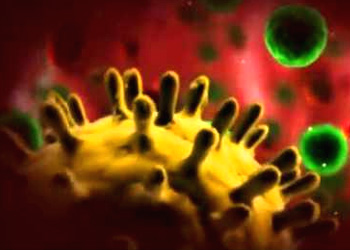 T cells play different roles in the immune response and can be characterized by their surface antigens.
T cells play different roles in the immune response and can be characterized by their surface antigens.
Cell–mediated immunity is an immune response that does not involve antibodies but rather involves the activation of phagocytes, antigen–specific cytotoxic T–lymphocytes and the release of various cytokines in response to an antigen. Cell–mediated immunity is directed primarily at microbes that survive in phagocytes and microbes that infect non–phagocytic cells. It is most effective in removing virus–infected cells, but also participates in defending against fungi, protozoans, cancers and intracellular bacteria. It also plays a major role in transplant rejection.
The MHC molecules are glycoproteins encoded in the large cluster of genes known as the major histocompatibility complex (MHC). Their most striking structural feature is a cleft running across their outermost surface, in which a variety of peptides can be bound. T–cell receptors recognize features both of the peptide antigen and of the MHC molecule to which it is bound. This introduces an extra dimension to antigen recognition by T cells, known as MHC restriction, because any given T–cell receptor is specific not simply for a foreign peptide antigen, but for a unique combination of a peptide and a particular MHC molecule.